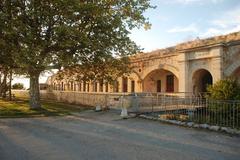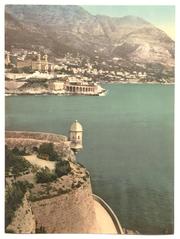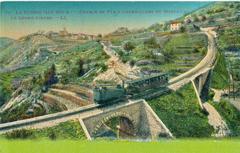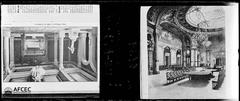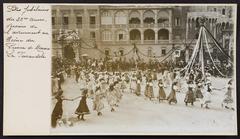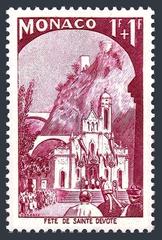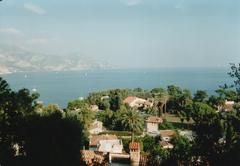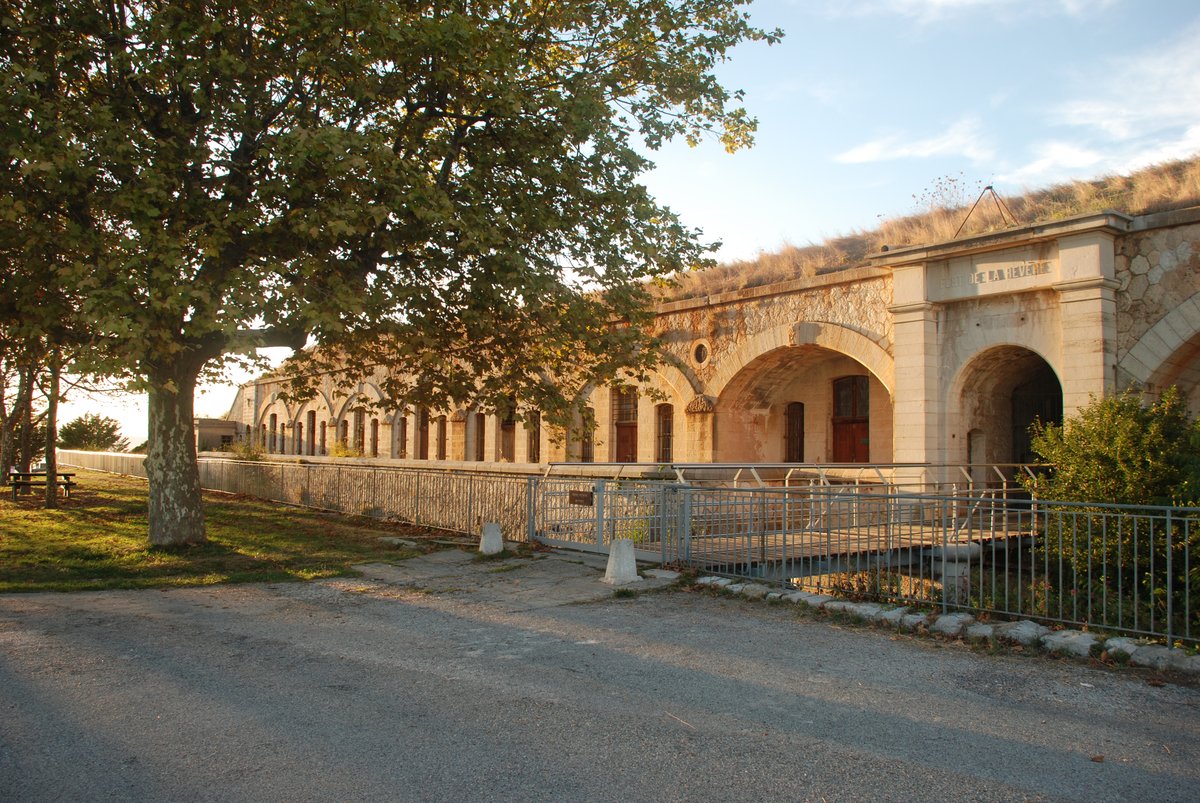
Visiting Hours and Tickets for Fort de la Revère, Monaco
Date: 24/07/2024
Introduction
Nestled in the scenic hills above Monaco, near the charming village of Èze, Fort de la Revère stands as a testament to France’s rich military history and architectural prowess. Constructed between 1879 and 1885 as part of the Séré de Rivières system, this fortification was designed to protect the French Riviera from potential invasions, reflecting the strategic foresight of the late 19th century (Fortified Places). Over the years, Fort de la Revère has witnessed significant historical events, particularly during the World Wars, where it played pivotal roles in observation and defense. Today, it offers visitors not only a glimpse into its storied past but also breathtaking panoramic views of the Mediterranean coastline, making it a must-visit destination for history enthusiasts and nature lovers alike (Fort de la Revère). This comprehensive guide will provide you with all the essential information you need to plan your visit, including historical insights, visitor tips, and nearby attractions.
Table of Contents
- Introduction
- Historical Background of Fort de la Revère
- Visitor Information and Travel Tips
- Cultural Insights
- Conclusion
- FAQ
Historical Background of Fort de la Revère
Early Conception and Construction
Fort de la Revère, located in the picturesque region of La Turbie near Monaco, is a testament to the strategic military foresight of the late 19th century. The fort was constructed between 1879 and 1885 as part of France’s Séré de Rivières system, a network of fortifications designed to protect the nation from potential invasions. This period was marked by heightened tensions in Europe, particularly following the Franco-Prussian War of 1870-1871, which underscored the need for robust defensive structures (Fortified Places).
Architectural Design and Features
The fort’s design reflects the military architectural trends of the time, characterized by thick stone walls, underground tunnels, and strategically placed artillery positions. The structure was built to accommodate a garrison of soldiers, with facilities including barracks, a kitchen, and storage rooms for ammunition and supplies. The fort’s elevated position, at approximately 700 meters above sea level, provided a commanding view of the surrounding area, making it an ideal location for monitoring and defense (Fort de la Revère).
Role in World War I and II
During World War I, Fort de la Revère served as a crucial observation post and communication center. Its strategic location allowed for effective monitoring of enemy movements along the Mediterranean coast. However, it was during World War II that the fort’s significance was truly highlighted. The fort was occupied by German forces, who utilized it as a stronghold to control the region. The Allies recognized its strategic importance and launched several operations to neutralize the fort, culminating in its eventual liberation in 1944 (WWII Fortifications).
Post-War Period and Decline
After World War II, Fort de la Revère’s military importance diminished significantly. Advances in military technology and changes in warfare tactics rendered many traditional fortifications obsolete. The fort was gradually abandoned and fell into disrepair. However, its historical significance and architectural uniqueness have made it a subject of interest for historians and preservationists alike (Post-War Fortifications).
Preservation and Modern-Day Significance
In recent years, efforts have been made to preserve Fort de la Revère as a historical monument. The fort is now part of the Parc de la Grande Corniche, a protected natural area that offers stunning views of the French Riviera and the Mediterranean Sea. Visitors can explore the fort’s remnants, including its underground tunnels and artillery positions, providing a glimpse into the past and the fort’s role in shaping the region’s history (Parc de la Grande Corniche).
Cultural and Educational Impact
Fort de la Revère has also become an important cultural and educational site. It hosts various events, including historical reenactments, guided tours, and educational programs aimed at raising awareness about the region’s military history. These initiatives have helped to foster a deeper understanding of the fort’s historical context and its impact on the local community (Cultural Events).
Visitor Experience
Today, Fort de la Revère is a popular destination for tourists and history enthusiasts. The fort’s location within the Parc de la Grande Corniche offers visitors a unique combination of historical exploration and natural beauty. The park’s well-maintained trails provide access to the fort, allowing visitors to enjoy scenic hikes while learning about the site’s historical significance. Informational plaques and guided tours offer insights into the fort’s construction, its role in various conflicts, and its eventual decline and preservation (Visitor Information).
Visitor Information and Travel Tips
Visiting Hours and Tickets
- Visiting Hours: Fort de la Revère is open daily from 9:00 AM to 6:00 PM. Hours may vary on public holidays, so it’s advisable to check the official website before planning your visit.
- Tickets: Tickets can be purchased at the entrance or online. The standard ticket price is €5 for adults, €3 for students and seniors, and free for children under 12.
Accessibility
- The fort is accessible by car, with parking available at the entrance. For those using public transportation, buses from La Turbie and Monaco stop near the park entrance.
- The site is partially accessible to visitors with mobility impairments; however, some areas, especially the underground tunnels, may present challenges.
Nearby Attractions
- Tropaeum Alpium: A short drive from the fort, this Roman monument offers additional historical context and stunning views.
- Monaco: Just a few kilometers away, visitors can explore the luxurious principality known for its casinos, gardens, and the famous Prince’s Palace.
Special Events and Guided Tours
- The fort regularly hosts historical reenactments and special events, particularly during the summer months. Check the official website for the event calendar.
- Guided tours are available in multiple languages and can be booked in advance. These tours provide in-depth insights into the fort’s history and architecture.
Photographic Spots
- The fort’s elevated position offers panoramic views of the Mediterranean Sea and the French Riviera, making it an ideal spot for photography enthusiasts. Early morning and late afternoon provide the best lighting conditions.
Cultural Insights
Historical Significance
The Fort de la Revère, perched at an altitude of 696 meters, is a historical monument that offers a glimpse into France’s military past. Constructed between 1882 and 1885, the fort was part of a series of fortifications built to bolster French defenses following the defeat in the Franco-Prussian War of 1870 (France Voyage). The fortifications, known as the Séré de Rivières system, were designed to protect the French Riviera from potential invasions. The Fort de la Revère, along with the nearby La Drète fortress, exemplifies the “Central massif and low battery” type of fortification, featuring barrack blocks in the center and batteries on the periphery (Eze Tourisme).
During World War II, the fort served as an internment camp under the Vichy regime, housing prisoners, including British airmen. Notably, there were two spectacular escapes from the fort in 1942 (France Voyage). After the war, the fort continued to be used by the military until it was demilitarized and eventually closed to the public.
Architectural Features
The Fort de la Revère is a half-buried structure surrounded by a ditch that was once equipped with guns. The central barracks and peripheral batteries are characteristic of the Séré de Rivières fortification style. The fort’s strategic location offers a commanding view of the surrounding valleys, including Laghet and Paillon, and the coastline stretching from Italy to Saint-Tropez (Eze Tourisme).
Cultural and Recreational Activities
Although the fort itself is closed to the public, the surrounding area is a popular destination for hiking and nature walks. The Parc Naturel Départemental de la Grande Corniche, which encompasses the fort, offers several trails that provide breathtaking panoramic views of the French Riviera (Explore Nice Côte d’Azur). Visitors can enjoy a variety of activities, including picnicking under the plane trees on the esplanade, bird watching at the ornithological observation area, and exploring the botanical, historical, and geological discovery trails.
Local Flora and Fauna
The Parc Naturel Départemental de la Grande Corniche is home to a diverse range of flora and fauna. The botanical trail around the fort allows visitors to discover the local plant species, while the nature house provides educational exhibits about the park’s ecosystem (Explore Nice Côte d’Azur). The park’s elevation and varied terrain create a unique habitat for many bird species, making it a popular spot for ornithologists and nature enthusiasts.
Visitor Tips
For those planning to visit the Fort de la Revère, it is recommended to start the hike from the medieval village of Èze. Two paths connect the village to the fort, and the round trip takes approximately three hours (Explore Nice Côte d’Azur). The hike offers stunning views of the Mediterranean Sea and the surrounding mountains, making it a rewarding experience for outdoor enthusiasts.
Nearby Attractions
In addition to the Fort de la Revère, visitors to Èze can explore several other attractions. The Jardin botanique d’Èze, located in the village, is renowned for its impressive collection of cacti and succulents and offers panoramic views of the Mediterranean (Stephanie Janett). The village itself, with its winding medieval streets and picturesque architecture, is a charming destination that transports visitors back in time.
For those interested in a celestial adventure, the Parsec-Astrorama, located a short drive from Èze, offers stargazing sessions and educational programs about astronomy (Stephanie Janett). The nearby Èze-sur-Mer Beach provides a peaceful retreat with crystal-clear waters, perfect for a relaxing day by the sea.
Practical Information
The Fort de la Revère and the surrounding park are free to visit, making it an accessible destination for all travelers (Explore Nice Côte d’Azur). The park is open year-round, but visitors should check the weather forecast before planning their hike, as conditions can vary. For more information, visitors can contact the local tourism office at +33 4 93 41 04 80 or visit the Èze Tourism website.
Conclusion
Fort de la Revère, with its rich historical significance and stunning natural surroundings, offers a unique blend of educational and recreational experiences. While the fort no longer serves its original military purpose, its preservation efforts have transformed it into a valuable cultural monument and a popular tourist destination. Visitors can explore its remnants, enjoy scenic hikes, and partake in various educational programs that shed light on the region’s military history (Parc de la Grande Corniche). The fort’s strategic location provides unparalleled views of the French Riviera, making it a haven for photographers and nature enthusiasts. By following the provided travel tips and exploring the nearby attractions, visitors can ensure a memorable and enriching experience. Stay connected with us for more historical insights and travel tips by downloading our mobile app Audiala and following our social media channels for the latest updates.
FAQ
Q: What are the visiting hours for Fort de la Revère? A: The fort is open daily from 9:00 AM to 6:00 PM, with variations on public holidays.
Q: How much do tickets cost for Fort de la Revère? A: Tickets are €5 for adults, €3 for students and seniors, and free for children under 12.
Q: Is Fort de la Revère accessible to visitors with mobility impairments? A: The site is partially accessible, but some areas, especially the underground tunnels, may present challenges.
Q: Are there guided tours available at Fort de la Revère? A: Yes, guided tours are available in multiple languages and can be booked in advance.
References
- Fortified Places. n.d. Retrieved from Fortified Places
- Fort de la Revère. n.d. Retrieved from Fort de la Revère
- Parc de la Grande Corniche. n.d. Retrieved from Parc de la Grande Corniche
- France Voyage. n.d. Retrieved from France Voyage
- Eze Tourisme. n.d. Retrieved from Eze Tourisme
- Explore Nice Côte d’Azur. n.d. Retrieved from Explore Nice Côte d’Azur
- Stephanie Janett. n.d. Retrieved from Stephanie Janett
